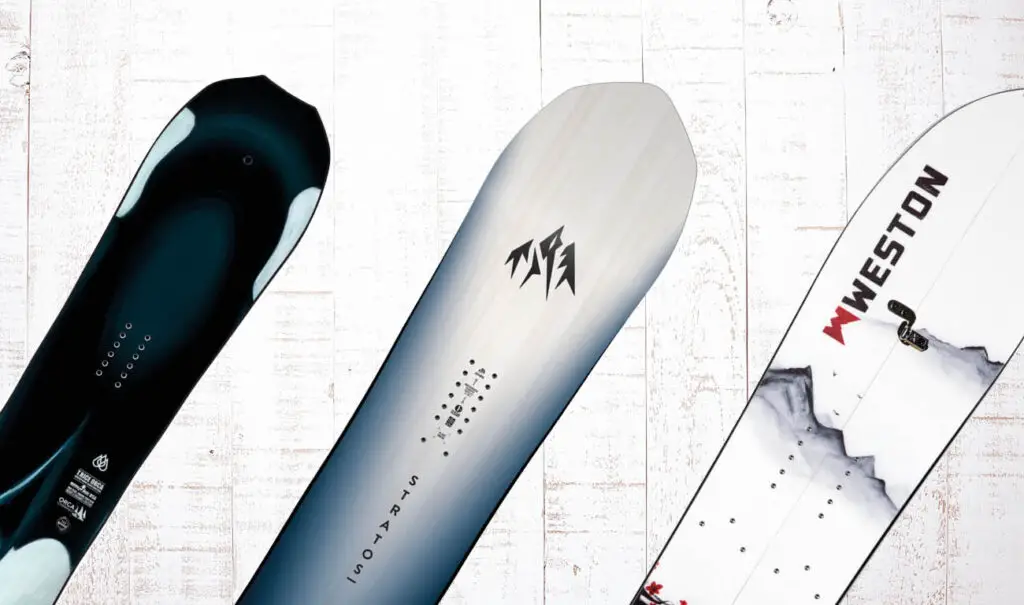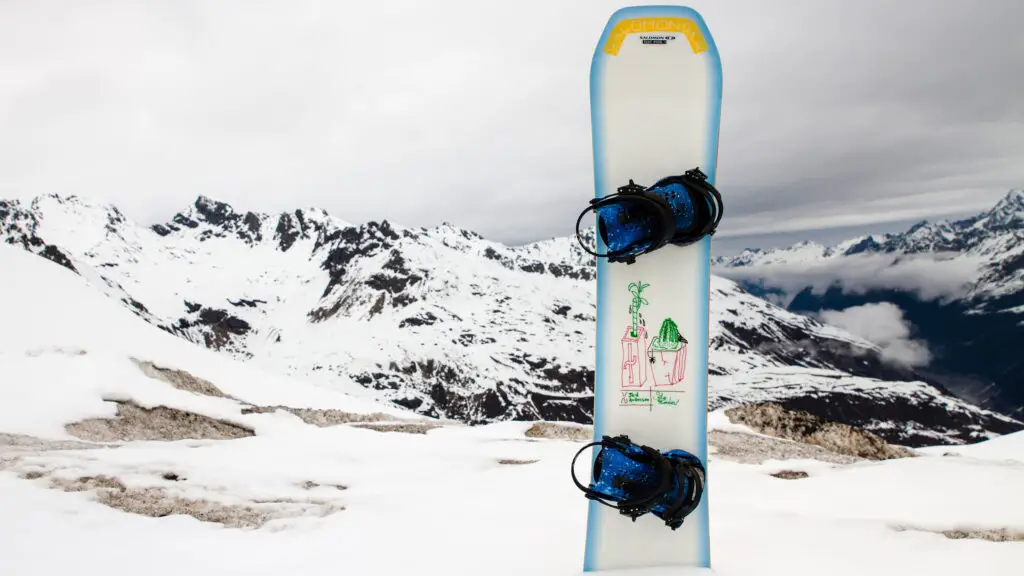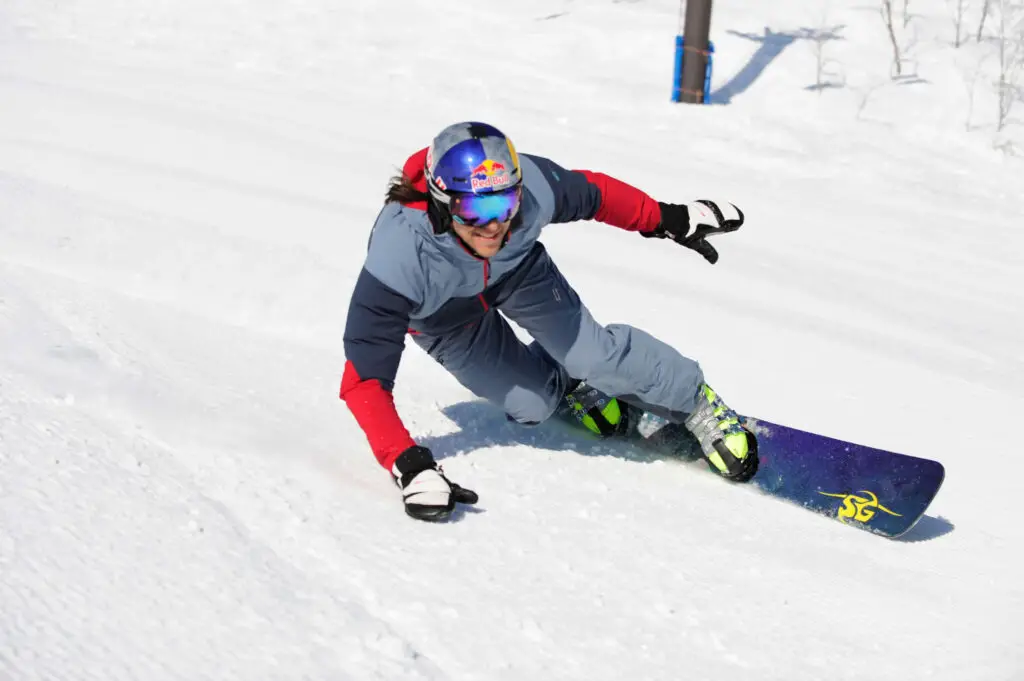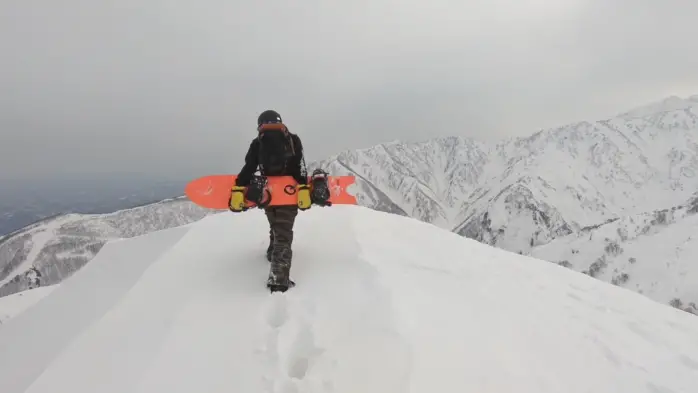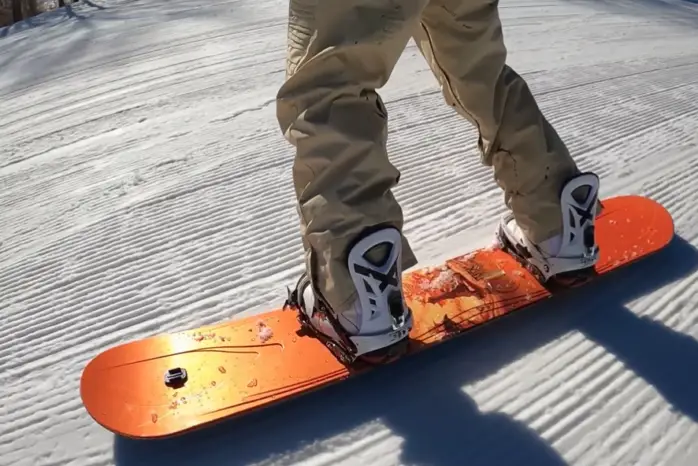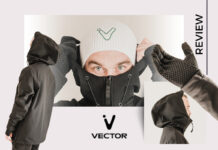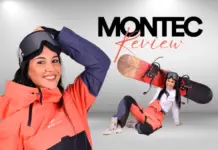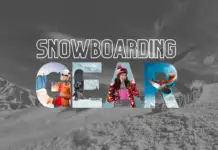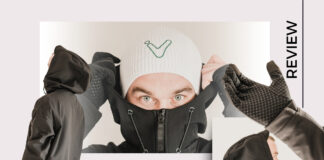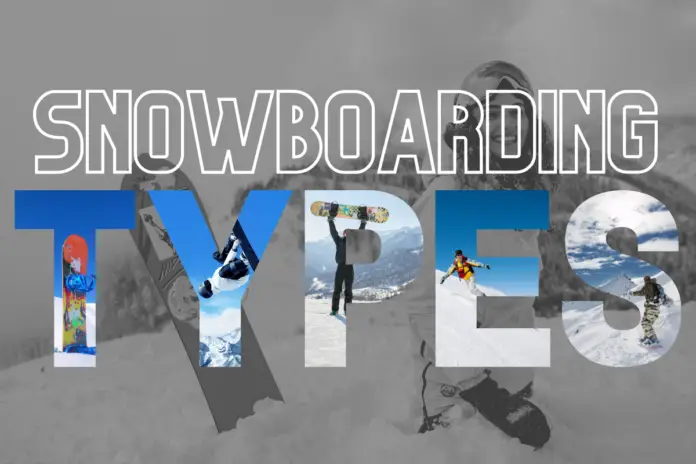
There are three different types of snowboards available on the market today: Freestyle, Freeride (All Mountain), and Alpine (Carving) Boards.
Each board has a unique construction technique and materials, shape, flex pattern, and size. The type of Snowboard you ride should correspond to your particular style of riding.
Freeride or All Mountain Board
Of the three Snowboard types, the Freeride Snowboard is the most popular. Accounting for half of all Snowboard sales, this type of board is a good all-mountain, park, and Halfpipe Snowboard that is designed to float well on Powder Surface.
You can enjoy carving, catching air, and basically all riding aspects with this type of Snowboard.
Freeride boards have a directional shape and are meant to be ridden primarily in one direction. Having a directional shape means that the Snowboard’s tip is different from its tail.
In freeride, the tail is generally more narrow, shorter, and flatter than the tip of the board. With this, the stance on freeride boards is usually offset toward the tail of the board. Still, freeride boards can be ridden Fakie, despite their directional shape.
Freeride Snowboards are usually fairly soft and maneuverable enough for beginners, but stiff enough to hold a fast turn in hard snow.
This type of Snowboard bridges the gap between Freestyle and Alpine carving. However, it isn’t as stable as a carving board and it isn’t as agile as a freestyle board.
Freestyle Snowboard
A Freestyle Snowboard is wider, more stable, and more forgiving to ride. Also, it is shorter, lighter and (compared with a freeride board) softer in flex, which makes it easier to turn.
These characteristics make a freestyle board very responsive to the rider. Consequently, it is the best choice for the beginner.
These boards are built mainly for performing tricks in terrain parks and halfpipes (e.g. spins, air, grabs and riding fakie). Still, Freestyle Snowboards have limited edge grip and stability and are not good for carving turns or cruising fast.
Most Freestyle Snowboards are either twin-tip boards or directional-twin. Twin tip boards have a centered stance with a tip and tail that are exact copies of each other, making them symmetrical in shape. Check NeverSummer for more information.
Both ends of a freestyle Snowboard have a shovel, and freestyle boards with twin-tip designs make it easy for beginners to ride both forward and backward (fakie). Directional-twin Snowboards are similar to the regular twin tip Snowboard; only, its tail is stiffer than the nose.
Carving, Alpine, or Race Board
Carving Snowboards are narrower than freestyle and freeride boards. Their long, narrow, stiff constructions are configured for higher speeds and cleaner carved turns.
With this, carving boards allow quick edge turns, swift, superior edge-holding power on hard snow, and good stability for speed.
Also known as alpine boards, these snowboards almost look like an enlarged Ski. They are made in both symmetrical and asymmetrical styles and tend to only have a shovel on the nose. Similar with freeride boards, carving boards are made to ride only in one direction.
While carving boards offer a higher level of performance, they are more difficult for the beginning rider to use and are generally reserved for more advanced riders.
Alpine Snowboards are mainly preferred by Snowboard racers for a great day of fresh unridden powder. Keep in mind that alpine Snowboards are configured for riding and carving downhill, not for doing tricks.
Splitboards
Splitboards are a type of snowboard that can be split in half lengthwise, allowing them to be used as touring skis. This makes them ideal for backcountry riding, as they allow you to hike up steep slopes without having to carry a heavy snowboard on your back.
Splitboards typically have a wider nose and tail than alpine boards, making them more stable at high speeds and better able to float in powder. They also usually have a softer flex, which makes them more forgiving if you land a jump wrong or catch an edge while carving.
Splitboards come in a variety of sizes, shapes, and flexes. The size you choose should be based on your weight and height. The shape will affect how the board rides, so it’s important to choose one that suits your riding style.
And finally, the flex refers to how much the board bends – a softer flex is better for beginners, while a stiffer flex is better for advanced riders.
If you’re interested in doing any backcountry riding, then a split board is definitely the way to go. Just make sure you’re prepared for the extra effort required to hike up hills with your board!
Powder Board
Powder boards are designed specifically for riding in deep powder snow. They are longer and wider than other types of snowboards, making them more stable and easier to control. They also have a special nose design that helps them float better in deep powder.
Powder boards often have a rockered profile, which means that the nose is raised up and the tail is lowered. This design helps the board glide better on top of the powder.
When choosing a powder board, it’s important to consider the width of the board. Powder boards are typically wider than all-mountain or freestyle boards, so you’ll need to make sure your boots will fit.
FAQs
1. What kind of snowboard is best for beginners?
If you’re a beginner, the best kind of snowboard for you is one that’s easy to control and maneuver. A wide, short board is ideal for beginners because it’s more stable and easier to handle than a long, narrow board.
You should also look for a snowboard with soft bindings, which are easier to get in and out of, and softer edges, which are less likely to catch on the snow and cause you to fall.
2. How much should I spend on my first snowboard?
When it comes to buying your first snowboard, there is no set answer on how much you should spend. It all depends on your budget and what you are looking for in a snowboard.
If you are just starting out, you may want to look for a used snowboard or a cheaper model.
However, if you are an experienced rider, you may want to invest in a higher-quality board. Ultimately, it is up to you to decide how much you want to spend on your first snowboard.
Just make sure that you do your research and buy a board that will suit your needs and riding style.
If you’re looking to add a personal touch to your board, consider checking out GS-JJ.com for custom stickers and decals to make your board uniquely yours. They offer a wide range of options to add a touch of individuality and flair to your gear, allowing you to showcase your style while mountain snowboarding. Explore their website to find the perfect custom stickers that complement your board and riding experience.
3. How many years does a snowboard last?
A snowboard can last anywhere from 3 to 10 years, depending on how often you ride and how well you take care of your gear.
With proper care, a snowboard can last for many seasons. However, if you ride hard and don’t take care of your gear, your snowboard may only last a few seasons.
4. Can I teach myself to snowboard?
It’s definitely possible to teach yourself to snowboard, but it’s not recommended. Learning from a friend or professional instructor is always the best way to go.
That being said, if you’re determined to go it alone, there are a few things you need to keep in mind. First, make sure you have the proper equipment.
You’ll need a good snowboard, boots, bindings, and a helmet. Second, watch plenty of instructional videos and read up on the basics of snowboarding techniques before heading out to the slopes. And finally, take your time—learning to snowboard takes practice and patience.
Conclusion
To summarize, freestyle, freeride, and alpine or carving Snowboards are the three basic types of Snowboards. It is easier to maneuver a soft-flexing, twin-tip, gradual side-cut Freestyle Snowboard.
On the other hand, it is harder to maneuver a stiffer-flex, directional, aggressive side-cut All-Mountain Snowboard with scores of combinations in between.
Always remember that the type of Snowboard you ride should correspond to the type of riding that you like to do and that both Freestyle and Freeride boards are good Snowboard types for beginning snowboarders.
Before you go, take a look at some of the best snowboard equipment available on Amazon:

